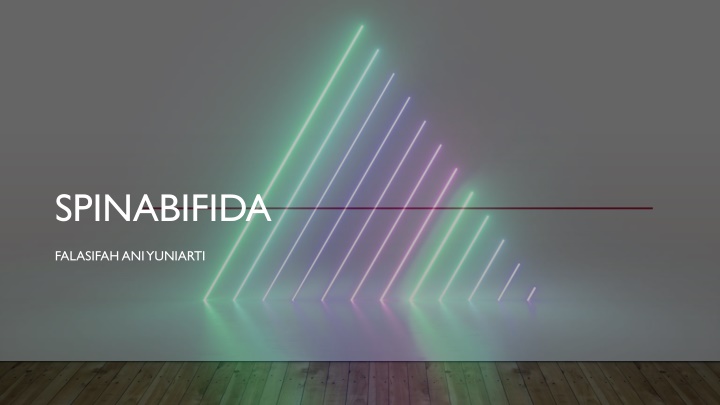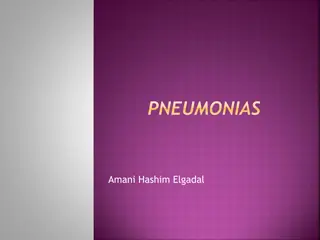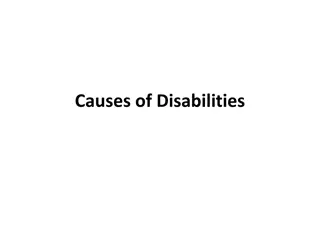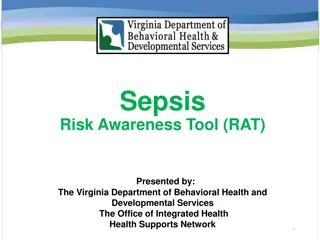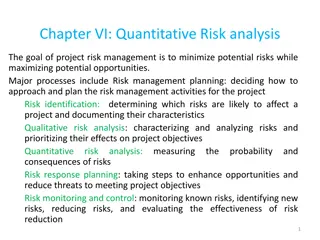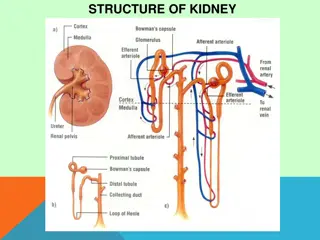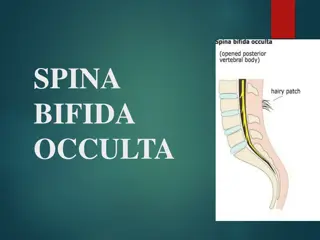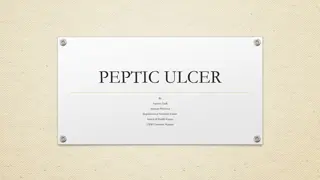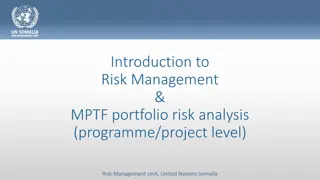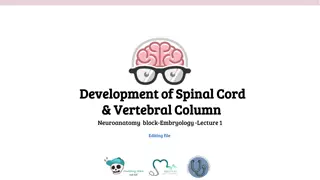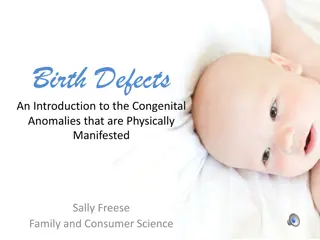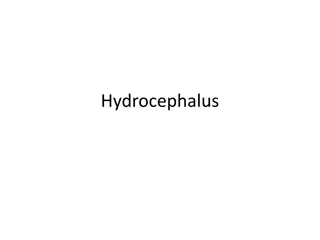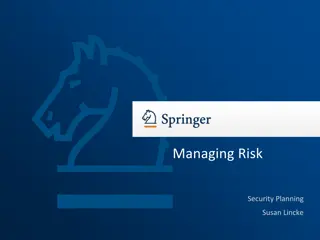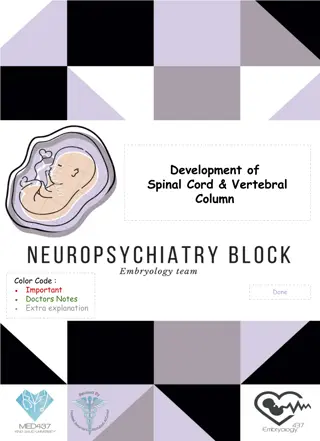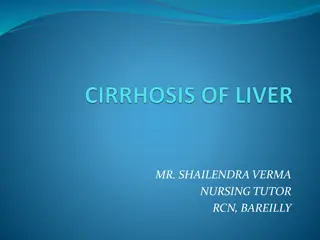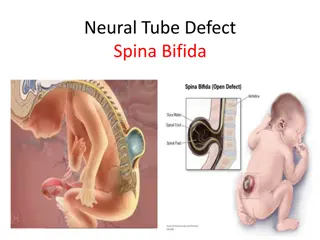Spina Bifida: Causes, Symptoms, and Risk Factors
Spina bifida is a birth defect affecting the spine and spinal cord. Learn about the types, causes, symptoms, and risk factors associated with this condition. Discover how factors like low folic acid intake, family history, and certain medicines can impact the likelihood of spina bifida. Explore the symptoms such as abnormal back appearance, paralysis, constipation, hydrocephalus, and associated health issues. Understand the risk factors related to neural tube defects and socioeconomic status.
Download Presentation

Please find below an Image/Link to download the presentation.
The content on the website is provided AS IS for your information and personal use only. It may not be sold, licensed, or shared on other websites without obtaining consent from the author.If you encounter any issues during the download, it is possible that the publisher has removed the file from their server.
You are allowed to download the files provided on this website for personal or commercial use, subject to the condition that they are used lawfully. All files are the property of their respective owners.
The content on the website is provided AS IS for your information and personal use only. It may not be sold, licensed, or shared on other websites without obtaining consent from the author.
E N D
Presentation Transcript
SPINABIFIDA FALASIFAH ANI YUNIARTI
WHAT IS SPINABIFIDA Spina bifida is a condition present at birth (birth defect) when there are problems with the spine, spinal cord, and the surrounding nerves
TYPES OF SPINABIFIDA Spina bifida occulta. This is a mild form of spina bifida. The spinal cord and surrounding tissues stay inside the baby. But the lower spine doesn t form as it should. The child may have a hairy patch, dimple, or birthmark over the area of the defect. Or the problem may not have any visible marks. Meningocele. This is a moderate form of spina bifida. The fluid-filled sac that surrounds the spinal cord forms outside of the body in the spine area. The sac does not contain the spinal cord or nerves. Myelomeningocele. This is a severe form of spina bifida. Part of the spinal cord and nerves form outside the body. They are contained in a fluid-filled sac that bulges from the baby s back. A baby with this problem usually has weakness and loss of feeling below the defect. The baby may have problems with bowel and bladder function
CAUSES The cause of spina bifida is unknown low folic acid intake during pregnancy having a family history of spina bifida medicines taking certain medicines such as valproic acid (used to prevent seizures) during pregnancy has been linked to an increased risk of having a baby with spina bifida
RISK FACTORS Once a child with a neural tube defect has been born in the family, the chance that this problem will happen in another child rises to 1 in 25. Mother s age. Spina bifida is more common in teen mothers. History of miscarriage. A woman who has had miscarriages in the past has a higher risk of having a baby with neural tube defects. Birth order. First-born babies are at higher risk. Socioeconomic status. Children born into lower socioeconomic families are at higher risk for spina bifida. Researchers think that poor diet may be a factor.
SYMPTOMS Area on the back that looks abnormal, such as a small hairy patch, dimple, or birthmark, or a pouch-like bulge (sac) No feeling below the place on the spine where the sac is Not able to move his or her legs (paralysis) Constipation or incontinence Increased fluid and pressure in the head area (hydrocephalus) Heart problems Bone problems Lower level of intelligence
DIAGNOSED TEST Blood test, quad screen measures 4 substances in the mother's blood to see if there is an increased risk for neural tube defects and other problems measures levels of alpha-fetoprotein (AFP) and other things in the blood Prenatal Ultrasound Amniocentesis
TREATMENT SC birth NICU o prevent infection and to protect the spinal cord and nerves that are exposed outside of the body. Surgery soon after birth to close the opening in the spine and treat hydrocephalus therapies to help make day-to-day life easier and improve independence, such as physiotherapy and occupational therapy assistive devices and mobility equipment, such as a wheelchair, or walking aids treatments for bowel and urinary problems
https://www.cedars-sinai.org/health-library/diseases-and-conditions---pediatrics/s/spina- bifida-in-children.html https://www.nhs.uk/conditions/spina-bifida/
